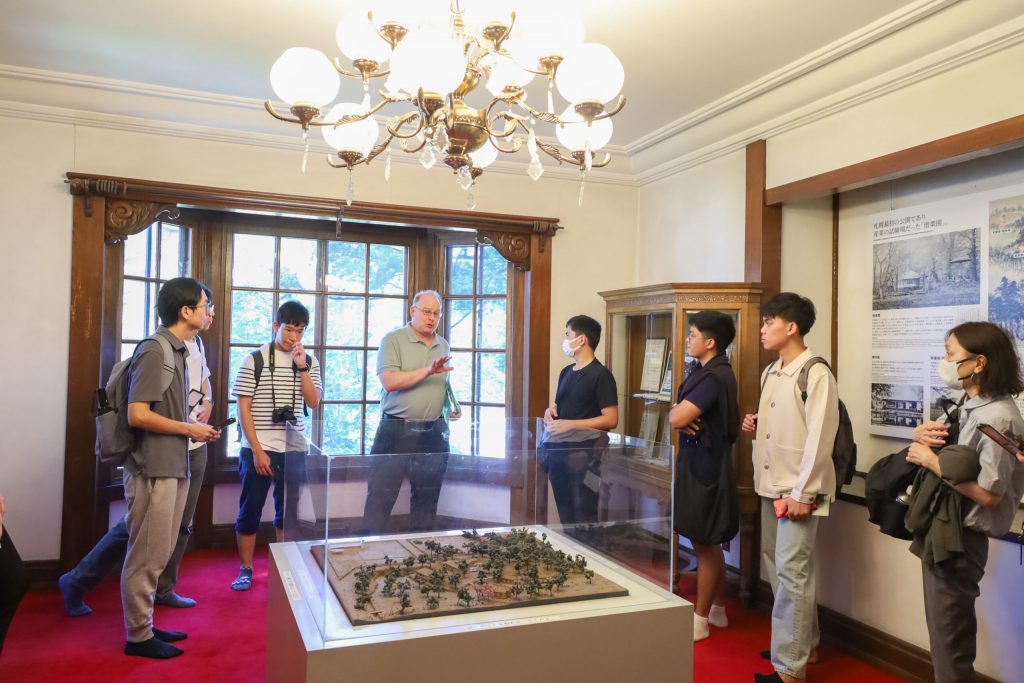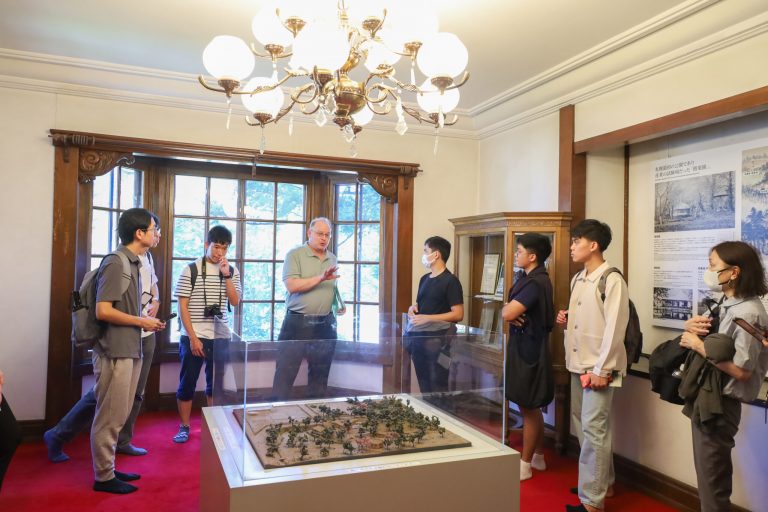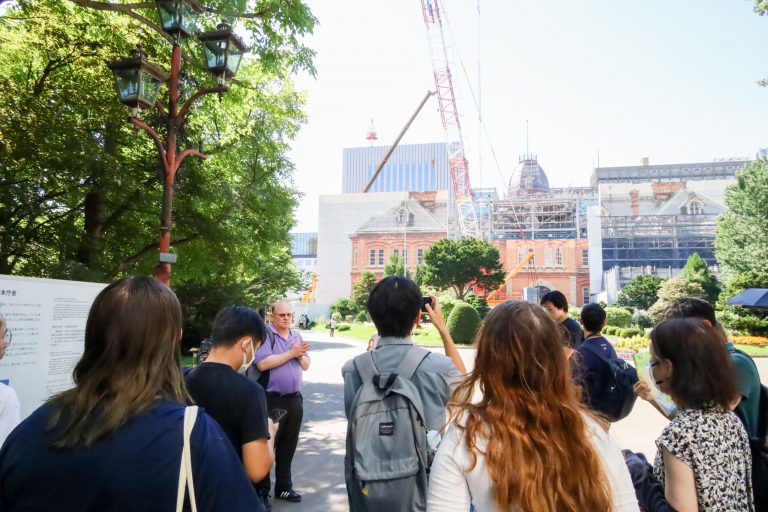Structures and sites that are considered to have important historical value to the nation often receive special designations from the government, which generates tourism. In Hokkaido Summer Institute’s (HSI) National Heritage Tourism – The Case of Hokkaido, Dr. Ken Ruoff taught the participants to analyze this phenomenon with a critical mind.
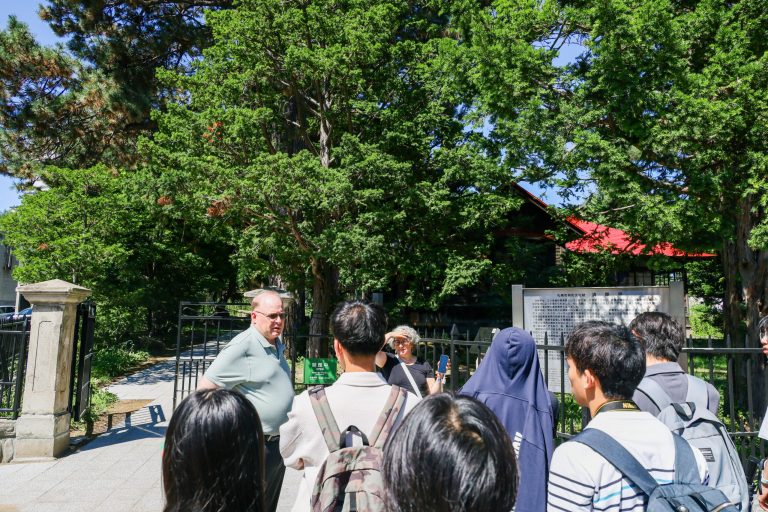
Dr. Ruoff (Portland State University, Hokkaido University Ambassador), the main instructor of the course, is an expert in East Asian history. By providing examples of national heritage sites from around the world, he pointed out that in some cases designations from the nation-state support simplistic nationalistic narratives. He constantly reminded the participants to keep a skeptical perspective upon coming across a heritage site.
“Please always be very critical, especially towards the concepts of ‘authenticity’ and ‘tradition,’ because they have no agreed-upon definitions, even among social science scholars. What does it take for something to be considered authentic or traditional?” said Dr. Ruoff in his opening lecture.
During this course, the participants explored several heritage sites in the Sapporo area. Within the university’s Sapporo Campus, they made brief visits to two sites: Furukawa Memorial Hall and the Sakushukotoni River. Professor Michelle La Fay (Hokkaido University) explained the historical significance of the two sites.
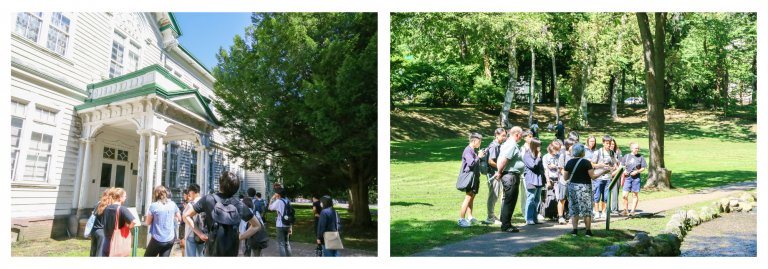
Outside the campus ground, the course participants and instructors paid a visit to Seikatei, a designated Tangible Cultural Property of Sapporo City that is located just a block south of the Sapporo Campus. Blending Japanese and western architecture styles, this wooden one-story building functioned as a rest house for distinguished guests in the 1880s.
The last visit as a group was made to the Former Hokkaido Government Office Building, also known colloquially as Akarenga (literally means ‘red bricks’) by the locals. Both Seikatei and Akarenga are structures/edifices from the development era of Hokkaido (kaitaku).
Using these two western-inspired establishments, Dr. Ruoff showed how the Japanese government of that period deliberately employed “western styles and lifestyle” as an attempt to prove their modern civilization to the Euro-American-centric world.
The course participants were given a list of other historical tourist sites in Sapporo City for their independent case study. They exercised the knowledge gained from the reading materials, lectures, and discussions by doing an analysis on one site of their choosing.
As suggested by the instructors throughout the course, the participants scrutinized the historical tourist sites from as many perspectives as possible: the curated exhibitions, the guidebooks, and the structure of the buildings. They reported the results in front of the class as their final project.
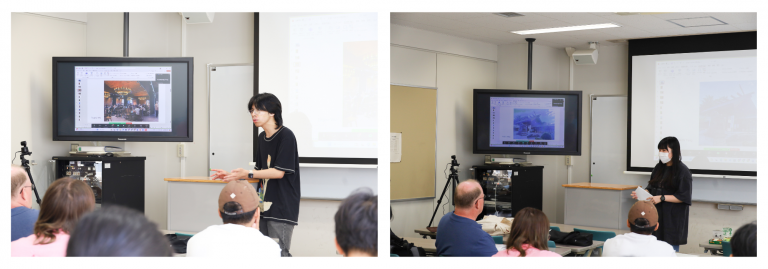
Among the participants were three friends from the University of the Philippines Diliman. They collectively decided to take this course despite it being peripheral to their fields of study, i.e., computer science, and enjoyed their time learning about Japanese culture and history.
One of the three students said, “Attending this course reignited my interest in history and heritage. The professors are all very knowledgeable. So, despite not having any fundamental knowledge in Japanese language and history, overall, it was a very informative course.”
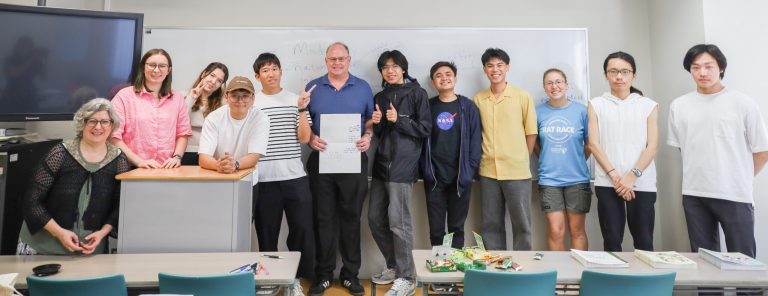
For more information about Hokkaido Summer Institute, visit this website:
https://hokkaidosummerinstitute.oia.hokudai.ac.jp


